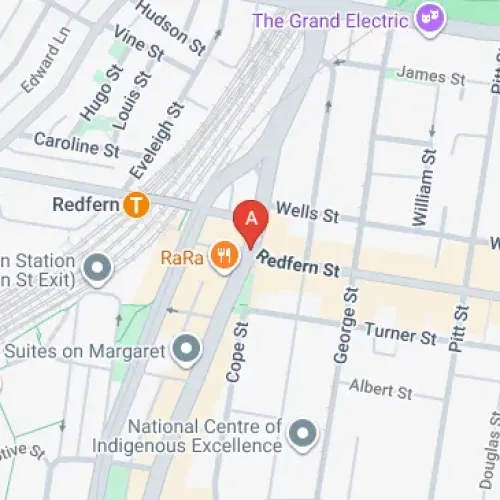Ultimate Guide to Parking Space Rental Agreements

In Australia's bustling cities, finding suitable parking spaces for your vehicle can be a significant challenge. With the rising cost of parking in commercial lots and the scarcity of available spots, many Australians are turning to private parking space rentals as a practical solution. A well-structured parking space rental agreement ensures transparency, protects both parties, and helps avoid potential disputes. Whether you're a property owner looking to generate extra income from your unused driveway or garage, or a driver seeking a reliable, cost-effective parking solution, understanding the intricacies of parking rental agreements is essential. This comprehensive guide explores everything you need to know about crafting and managing effective parking space rental agreements in Australia, ensuring a smooth experience for both landlords and tenants in this increasingly popular market.
Why Parking Space Rental Agreements Matter in Australia
A parking space rental agreement is a legally binding document that outlines the terms of renting a parking spot. In Australia's urban centres, where parking can cost upwards of $400 per month in commercial parking garages and public car parks, private agreements offer significant savings for drivers. According to recent data from the Australian Parking Association, there's been a 15% increase in private parking rentals since 2020, driven by economic pressures and increased vehicle ownership. As Daniel Battaglia, founder of Parking Made Easy, notes in his book on parking: "The average rate you can get for a parking spot is around AUD $400 a month, or AUD $4,000 a year, with some variation depending on your location." For property owners, these agreements safeguard against potential liabilities and misunderstandings, while tenants gain assurance that their parking arrangement is secure. Without a proper agreement, both parties risk financial losses and legal complications that could easily be avoided.

Key Components Every Rental Agreement Should Include
To ensure clarity and avoid potential conflicts, your parking rental agreement should include several essential elements. Start with comprehensive contact information for both parties, including full names, phone numbers, and email addresses. Precisely define the parking space location, dimensions, and any distinctive features such as undercover protection or security measures. Vehicle details should specify the make, model, colour, and registration number. Payment terms must outline the monthly rent amount, due date, accepted payment methods, and late payment penalties. Access details should explain how entry is granted (key, fob, or digital access) and any usage restrictions.
- Rules and Restrictions: Include limitations such as vehicle size, guest parking policies, and noise restrictions.
- Liability Clauses: Outline responsibilities for damages, theft, or accidents, and clarify who is responsible for insurance.
Legal and Safety Considerations for Australian Property Owners
Before renting out your parking space in Australia, you must navigate several legal considerations. First, verify that your property deed or strata bylaws permit subletting parking spaces, as some explicitly prohibit this practice. Australian property laws vary by state regarding zoning regulations and safety standards for rental properties, even parking spaces. For example, in New South Wales, rental agreements exceeding three months may require formal documentation with Fair Trading. I recently worked with a client in Sydney who discovered his strata bylaws required board approval before renting his space - after properly securing this, he's now earning $450 monthly from his unused basement spot.
- Dispute Resolution: Include processes for addressing disagreements, such as mediation.
- Termination Terms: Clearly outline conditions under which either party can end the agreement.
- Insurance Requirements: Specify whether the tenant or owner must provide coverage.

Step-by-Step Guide to Creating an Effective Agreement
Creating a comprehensive parking rental agreement doesn't have to be complicated. Start by using a pre-designed template to save time and ensure you cover all necessary elements. Renting out your parking space begins with customizing this template to your specific situation. Specify whether the lease is fixed-term or month-to-month, detail access methods like digital codes or physical keys, and include any additional amenities such as electric vehicle charging points. Next, have the agreement reviewed by a legal professional to verify compliance with Australian regulations. According to Legal Vision Australia, "Agreements in writing also allow parties to review the contract before signing, enabling them to revise the agreement as needed to ensure they understand their obligations." Once finalized, both parties should sign and date the document, with each retaining a copy for their records. Remember to document the condition of the parking space with photographs before the tenant begins using it.
Best Practices for Managing Your Parking Space Rental
Successfully managing your parking space rental or private car park requires ongoing attention and organization. Maintain detailed records of all rental documentation, payment receipts, communications regarding issues, and photos documenting the space's condition. Setting up automated payment systems significantly reduces the risk of late payments and simplifies tracking - platforms like PayPal or direct bank transfers work well for most Australian renters and owners. Address any disputes proactively by maintaining open communication channels and referring to the agreement terms when conflicts arise.
One Melbourne property owner I consulted with established a quarterly check-in practice with her tenant, which helped identify and resolve small issues before they escalated. Review and update agreements annually or whenever significant changes occur to ensure continued compliance with current regulations. Consider installing basic security measures like motion-sensor lighting to protect both the tenant's vehicle and your property.

Using Technology to Streamline Your Parking Space Rental
Digital platforms have revolutionized the parking spot rental market in Australia, making it easier for property owners and drivers to connect. Specialized platforms provide tools to streamline the entire process, from listing your space to handling payments securely. These services often include customizable agreement templates, search filters to help drivers find spaces by location or features, secure payment processing to reduce financial risks, and support services for resolving disputes. According to a 2022 Australian parking behavior study, 68% of urban parkers now prefer using digital platforms to find private parking solutions over traditional methods.
When selecting a platform, consider factors like service fees, payment protection, and customer support quality. Many property owners report that using these specialized services saves significant time and reduces the administrative burden of managing rentals independently, allowing them to enjoy the financial benefits with minimal effort.
Conclusion and Next Steps
Creating an effective parking space rental agreement is a straightforward process that protects both property owners and drivers while maximizing the benefits of private parking arrangements. By including key components, understanding legal considerations, following best practices, and leveraging technology, you can create a hassle-free rental experience that works for everyone involved. In Australia's increasingly congested urban areas, these private arrangements offer valuable alternatives to expensive commercial parking stations and public parking lots, creating win-win situations for all parties.
Property owners gain additional income from otherwise unused space, while drivers secure convenient, affordable parking solutions. Ready to start your own parking rental journey? Sign up free with Parking Made Easy today to list your space or find the perfect parking spot in your area. Our platform simplifies the entire process, providing templates, secure payments, and expert support to ensure your parking arrangement runs smoothly from day one.
**Daniel Battaglia, Parking Made Easy:** As part of the Parking Made Easy team with the assistance of Generative AI, Daniel Battaglia offers his experience in the car parking industry. He is dedicated to providing valuable information and resources to help you make smart parking choices and has been widely quoted in national media outlets. Connect with Daniel directly at daniel@parkingmadeeasy.com.au for further assistance.


